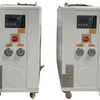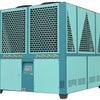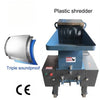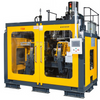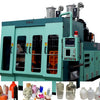1.8L Hollow Extrusion Blow Molding Machine: Technical Innovations and Industrial Applications
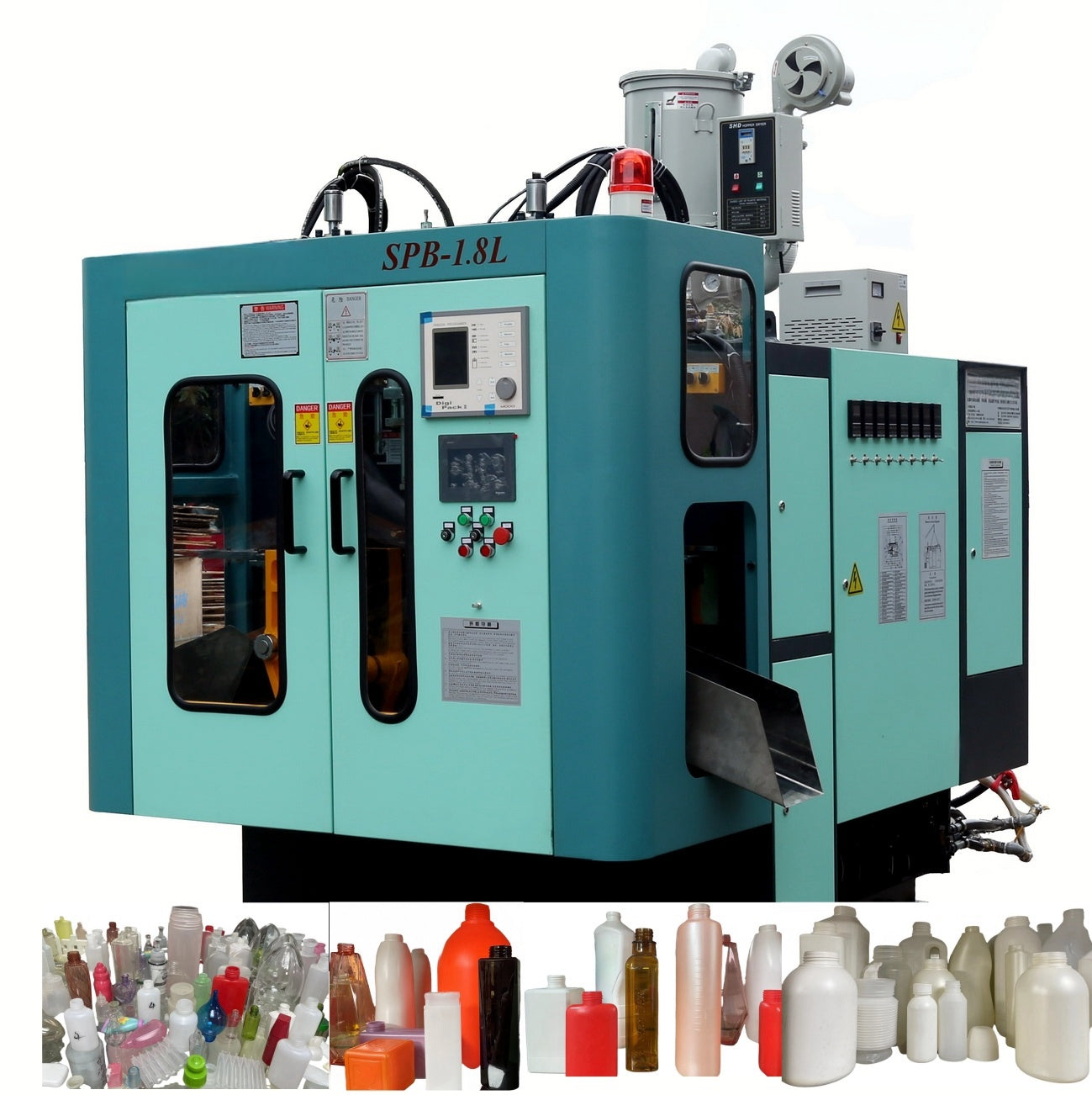
1. Introduction
Blow molding technology has revolutionized the production of hollow plastic products, offering cost-effective and scalable solutions for industries requiring lightweight, durable containers. The 1.8L hollow extrusion blow molding machine specializes in producing compact containers, such as water bottles, medicine bottles, and industrial drums. With the global blow molding market projected to grow at a CAGR of 8–10% by 2026, the 1.8L machine plays a pivotal role in meeting demands for precision, energy efficiency, and sustainability. This paper focuses on:
- Technical principles and design of 1.8L hollow extrusion blow molding machines.
- Applications in packaging, healthcare, and automotive sectors.
- Industry trends, including smart automation and eco-friendly materials.
2. Technical Principles of 1.8L Hollow Extrusion Blow Molding Machines
2.1 Core Components
The 1.8L hollow extrusion blow molding machine consists of the following key components:
-
Extruder System:
- Converts raw plastic pellets (e.g., HDPE, PP, PETG) into a molten parison.
- Key parameters: Screw diameter (65 mm), L/D ratio (22:1), and plasticizing capacity (70 kg/h for XCM-1.8L2JUWD) [1].
-
Mold System:
- Dual-station design (e.g., XCM-1.8L2JUWD model) enables simultaneous mold opening/closing and parison extrusion.
- Center-fed die head ensures uniform thickness (reducing ovality by 55%) [3].
-
Hydraulic System:
- High-precision proportional valves control mold clamping force (60 kN for XCM-1.8L2JUWD) and parison wall thickness.
-
Control System:
- PLC + touchscreen interface for temperature control (±0.5°C) and process automation [6].
2.2 Working Cycle
The 1.8L machine follows a four-stage process:
- Extrusion: Molten plastic is extruded into a parison.
- Clamping: The parison is placed into a mold cavity (max volume: 1.8L).
- Blowing: Compressed air (0.8 MPa) expands the parison to match the mold shape.
- Cooling and Ejection: Rapid cooling (via water or air) ensures dimensional stability before ejection.
3. Applications of 1.8L Hollow Extrusion Blow Molding Machines
3.1 Beverage and Food Packaging
- Products: 1.8L water bottles, juice jugs, and edible oil containers.
-
Advantages:
- High hygiene standards (e.g., FDA-approved HDPE).
- Cost-effective for mid-volume production (cycle time <20 seconds) [1].
3.2 Pharmaceuticals and Medical Devices
- Products: Medicine bottles, IV fluid containers, and sterile packaging.
- Material Compatibility: PP’s chemical resistance and sterilization compatibility.
3.3 Automotive Components
- Products: Small fuel tanks, coolant reservoirs, and air ducts.
- Precision Requirements: Wall thickness tolerance ±0.05 mm (achieved via servo-driven molds) [3].
3.4 Case Study: XCM-1.8L2JUWD Model in Beverage Packaging
The XCM-1.8L2JUWD dual-station machine (XCM Machinery Co., Ltd.) is widely used in China for producing 1.8L mineral water bottles:
- Efficiency: 70 kg/h HDPE output, 6.5-ton machine weight.
- Quality: Uniform wall thickness, smooth surface finish (99.5% defect-free rate) [1].
4. Industry Trends and Optimization Strategies
4.1 Smart Automation
- IoT Integration: Real-time monitoring of temperature, pressure, and cycle time via sensors.
- Predictive Maintenance: Reduces downtime by 25% through AI-driven fault detection [5].
4.2 Energy Efficiency
- Electromagnetic Heating: Saves 40–60% energy compared to resistance coils [10].
- Variable Frequency Drives (VFDs): Adjust motor speed to match production load, cutting energy use by 25% [10].
4.3 Sustainable Materials
- Biodegradable Polymers: Development of 1.8L containers using PLA or PBAT to meet global eco-regulations.
- Recycling Compatibility: Designing molds for easy disassembly and material recovery [11].
4.4 Multi-Layer Blow Molding
- Barrier Properties: Four-layer co-extrusion technology reduces oxygen permeability by 40% for food packaging [3].
5. Challenges and Future Directions
5.1 Technical Challenges
- Thickness Uniformity: Complex mold geometries may cause uneven parison distribution.
- Noise Reduction: Hydraulic systems generate >70 dB(A) noise, requiring acoustic shielding [3].
5.2 Future Innovations
- Hybrid Systems: Combining blow molding with 3D printing for rapid prototyping.
- AI-Driven Process Optimization: Machine learning models to predict optimal blowing pressure and cooling time.
6. Conclusion
The 1.8L hollow extrusion blow molding machine is a cornerstone of modern plastic manufacturing, balancing efficiency, precision, and scalability. By adopting smart automation, energy-saving technologies, and sustainable materials, manufacturers can align with global trends toward greener and more intelligent production. Future advancements in multi-layer co-extrusion and AI integration will further solidify its role in industries ranging from packaging to healthcare.

